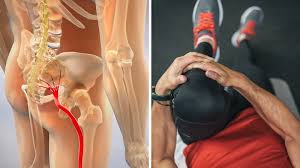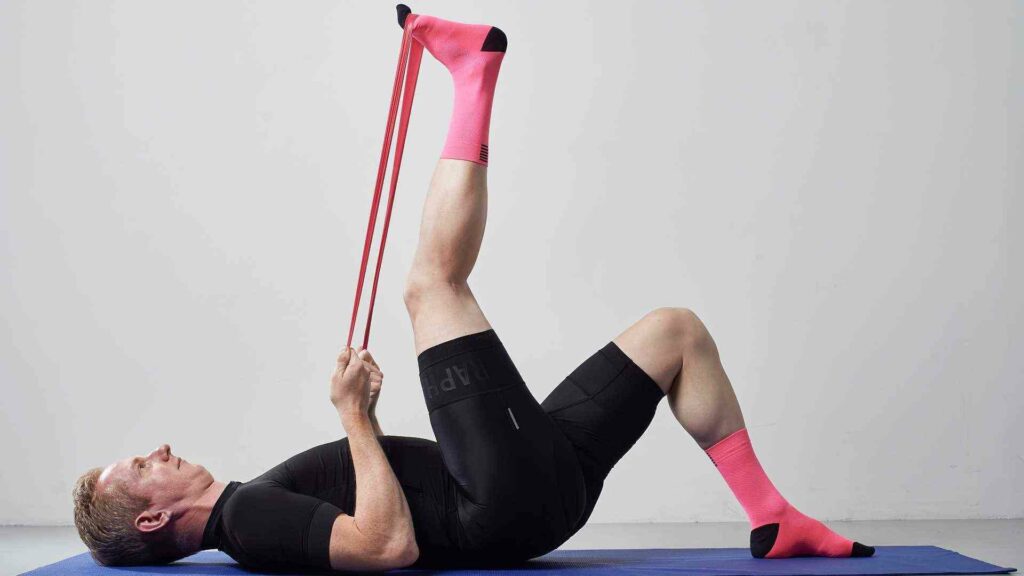If you are an avid runner, cyclist, or CrossFitter, there is a good chance you have heard of IT band syndrome. This condition can be extremely debilitating and frustrating for athletes. In this blog post, we will discuss what IT band syndrome is, how to treat it, and how to prevent it from happening in the first place.
Contents
What Is IT Band Syndrome?

IT band syndrome is a common injury that affects runners and other athletes. This condition occurs when the iliotibial band, or IT band, becomes inflamed and irritated due to overuse or repetitive movements.
IT Band is a thick band of connective tissue that runs along the outside of your thigh from your hip to just below your knee. While IT band syndrome can be very painful and uncomfortable, it is also a highly treatable condition.
Who Are Affected By IT band syndrome?
IT band syndrome can affect anyone, regardless of age or gender. It will include the following:
- Runners and cyclists tend to put a lot of stress on their IT bands.
- People suffering from overuse injuries or other musculoskeletal conditions, such as arthritis or osteoarthritis.
- Those with poor biomechanics in their hips and knees can increase the strain on the IT band.
Risk Factors
The main risk factors for developing IT band syndrome include:
Overtraining
if you are someone who regularly works out or participates in high-intensity sports, then you may be more prone to developing IT band syndrome due to the excessive strain and stress that your body endures.
Poor biomechanics
poor form or technique when moving can also put a lot of pressure on your IT band, which can lead to inflammation and pain. For instance, if you have tight hips or weak glutes, this can lead to a misalignment in your pelvis and legs that puts extra strain on the IT band.
Injury
if you have sustained an injury or trauma to your IT band, this can make it much more vulnerable to developing IT band syndrome. For example, if you are a runner and have recently sustained an injury to your knee or ankle, this may leave your IT band more prone to inflammation and pain.
Poor form while exercising
one of the main causes of IT band syndrome. If you are experiencing pain or discomfort while running, cycling, or doing any other kind of physical activity, it is important to take a step back and assess your form. By making sure that you are not engaging in poor exercise techniques, you can reduce your risk of developing this painful condition.
Sudden changes in your exercise routine
Another common cause of IT band syndrome. If you are experiencing pain after switching up your workout routine or increasing the intensity of your workouts, this may be a sign that you have developed an imbalance in your body. To prevent further injury and discomfort, it is important to listen to your body and make any necessary adjustments as needed.
Overuse
One of the main factors that can contribute to IT band syndrome. When your body is not given enough time to recover between workouts, this can lead to overuse and inflammation in your muscles and joints. To avoid putting too much stress on your IT band, make sure to rest adequately after each workout and give yourself plenty of time for recovery.
Incorrect or ill-fitting equipment
Using the wrong kind of shoes or gear can also increase your risk of developing IT band syndrome. If you are experiencing pain in your knees, hips, or lower back while exercising, it is important to take a look at the gear that you are using and make sure that it is properly fitted for your body and your needs.
Overall, many different factors can contribute to IT band syndrome and it is important to be mindful of your body and its signals to prevent further injury and discomfort.
Symptoms Of IT Band Syndrome
There are various symptoms of IT Band syndrome. It will be as follows:
- Pain, numbness, or tingling in the lateral part of your knee
- Swelling and inflammation around your knee joint
- Stiffness and tightness in your IT band muscles.
- Difficulty walking or running long distances
If you are experiencing any of these symptoms, it is important to seek treatment right away. This will allow you to get the relief that you need and prevent further damage to your knee joint.
What Are The Prevention And Treatment Options?

There are many different options for preventing and treating IT band syndrome, but the most effective strategies typically involve. This can include using supportive gear like knee straps or sleeves to help stabilize your joints and reduce pressure on the IT band.
Strengthening your core muscles
strengthening your core muscles is also key since the IT band is connected to many of the muscles in this area. Doing regular core workouts like planks and side crunches can help keep these muscles strong and reduce strain on the IT band.
Using ice packs
another effective strategy for treating it band syndrome is using ice packs or cold compresses to reduce inflammation and pain. You can either apply the ice pack directly to your knee or wrap it around the affected area for targeted relief.
Getting regular massages
another great way to help manage IT band syndrome is by getting regular massages from a trained professional. Massage therapy can help improve blood flow, release tension in the muscles, and reduce inflammation in the affected area.
Implementing proper form while exercising
One of the best ways to prevent and treat IT band syndrome is by focusing on proper form while exercising. This means that you should always be mindful of your posture and alignment when performing your workouts, making sure to use the correct technique at all times.
Pressure on your joints
Another key part of preventing and treating IT band syndrome is paying attention to how much pressure you are putting on your joints. This means that you should be mindful of the amount of weight you are lifting and make sure to stop if you feel any discomfort or pain in your joints.
Break while exercising
Lastly, it is crucial to take frequent breaks while exercising, especially if you have IT band syndrome. Taking short pauses during your workouts can help reduce strain on your joints and give them a chance to recover.
Medications
Your doctor may recommend taking over-the-counter pain medications or NSAIDs to help manage your symptoms. For instance, ibuprofen or aspirin can help reduce inflammation and relieve pain.
Rest
It is important to rest your injured IT band, especially if the injury is severe or chronic. This will give your joint time to heal and prevent further damage. You may need to take some time off from participating in any activities that put pressure on your IT band.
Exercise
Your doctor may also recommend specific exercises to help strengthen your IT band and improve flexibility in the surrounding muscles. These exercises can be done at home or with a physical therapist and may include stretching, strengthening, and range-of-motion activities.
Surgery
In some cases, surgery may be necessary to address the underlying cause of IT band syndrome and prevent further complications. This is typically only recommended as a last resort after other treatments have failed.
While there is no one-size-fits-all solution for treating IT band syndrome, these strategies can help you manage your symptoms and feel better overall. With some time, care, and attention, you can get back to enjoying your workouts without having to deal with the pain of it band syndrome.
Conclusion
It may be concluded that IT band syndrome is a condition that can cause pain and inflammation in the iliotibial band, a thick tendon that runs from the hip to the knee. By focusing on these treatments and maintaining a healthy lifestyle overall, you can manage this condition and reduce your risk of experiencing further pain or complications. So if you are suffering from IT band syndrome, don’t despair – there are plenty of ways to treat and manage it so that you can get back on track with your active lifestyle. Overall, ITBS is a serious condition that should be taken seriously.
Physical Therapy help patients recover from pain. If you’re experiencing Back pain, Shoulder pain, Knee pain, Neck pain, Elbow pain, Hip pain, or Arthritis pain, a physical therapist at MantraCare can help: Book a physiotherapy session.


